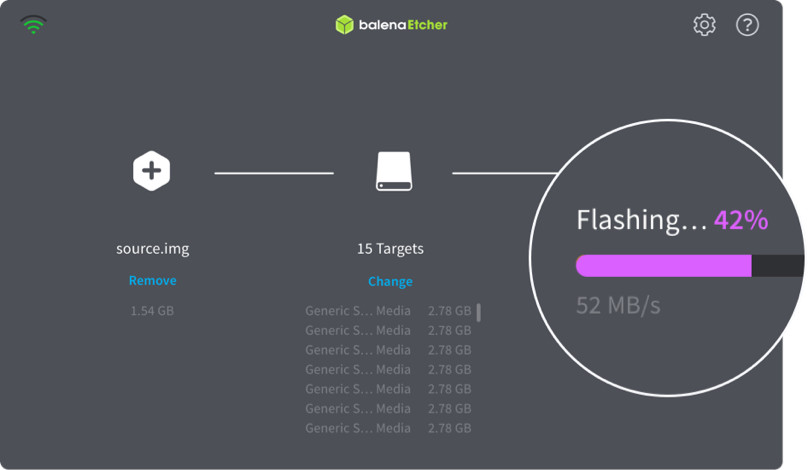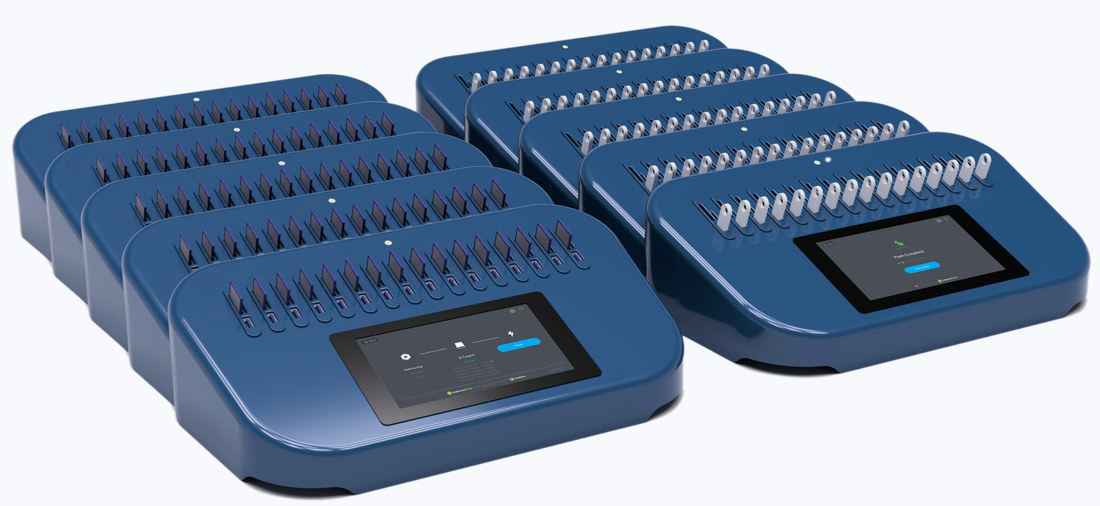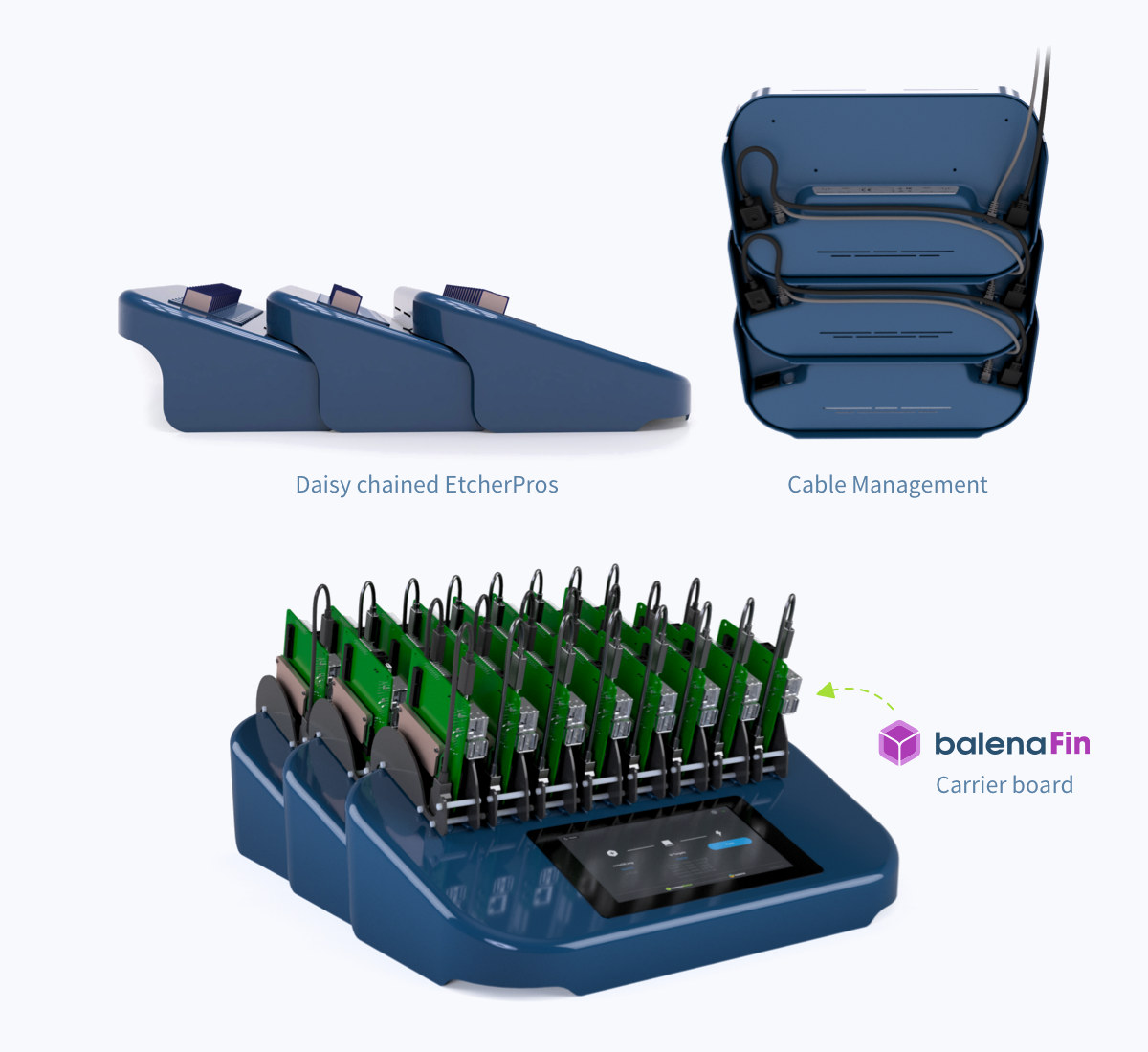We first wrote about Balena EtcherPro in December 2018, as a relatively low-cost multi-SD card writer, designed by Balena for people who needed to flash several micro SD cards, USB drives, or boards.
At the time, mass production was scheduled for Q2 2019. But it took a bit more time than expected, and the company is only now taking pre-orders for the device with a $50 deposit, and $990 price tag excluding VAT and shipping.
EtcherPro highlights and specifications:
- Display – 7-inch RGB touch screen for control
- Ports – 16x USB 3.0, 16x SD card slots, 16x MicroSD card slots to flash up to 16 drives/devices at once
- Flash at speeds up to 52MB/s when flashing 16 drives/devices simultaneously, or up to 200MB/s for a single drive/device
- Supports SD, microSD, USB drives, and single-board computers (or compute modules via carrier boards)
- Flash an image from a physical drive source or an online source (URL)
- Clone physical drives/devices
- Stackable to flash up to 160 drives/devices simultaneously with up to 10 EtcherPros (to be supported later in 2021)
- Connectivity – Dual-band WiFi and gigabit Ethernet
- Power Supply – 100 to 240V AC / 10A – 50 to 60 Hz
- Temperature range – 5°C ~ 35°C
The tool runs the latest version of Etcher software (automatically updated) and allows people to flash images to sixteen different targets from an online image, or fifteen targets while cloning a physical drive or board.

Balena EtcherPro initially comes in two variants with a Special edition in metallic gray (50 units), limited to 1 unit per customer, and a Midnight blue (regular edition) limited to 10 units per customer. The Special edition is expected to ship within 2 to 3 months, while the Midnight blue model should come out in 4 to 6 months.
In case you wonder how competitive is the $990 price tag, it is over $100 cheaper than the 1 to 15 model from Systor sold for $1115 on Amazon. But the latter does not support USB drives nor development boards, and does not offer a computer connection allowing for online sources.

Jean-Luc started CNX Software in 2010 as a part-time endeavor, before quitting his job as a software engineering manager, and starting to write daily news, and reviews full time later in 2011.
Support CNX Software! Donate via cryptocurrencies, become a Patron on Patreon, or purchase goods on Amazon or Aliexpress






